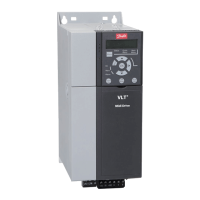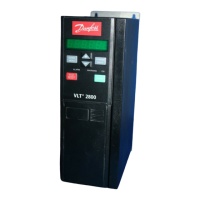Efficiency of the system (•
SYSTEM
)
To calculate the system efficiency, the efficiency of the
frequency converters (•
INV
) should be multiplied by the
efficiency of the motor (•
MOTOR
):
•
SYSTEM
= •
INV
x •
MOTOR
.
Based on the graph above, it is possible to calculate
the system efficiency at different loads.
Mains supply interference/harmonics
A frequency converter takes up a non-sinusoidal cur-
rent from mains, which increases the input current
I
RMS
. A non-sinusoidal current can be transformed by
means of a Fourier analysis and split up into sinusoidal
currents with different frequencies, i.e. different har-
monic currents I
n
with 50 Hz as the basic frequency:
Harmonic currents I
1
I
5
I
7
Frequency [Hz] 50 250 350
0,9 0,4 0,3
The harmonic currents do not affect power consump-
tion directly, but they increase the heat losses in the
installation (transformer, cables). Consequently, in
plants with a rather high percentage of rectifier load, it
is important to maintain harmonic currents at a low
level to avoid overload of the transformer and high
temperature in the cables.
Some of the harmonic currents might disturb commu-
nication equipment connected to the same transform-
er or cause resonance in connection with power-factor
correction batteries.
Power factor
The power factor (Pf) is the relation between I
1
and I
RMS
.
The power factor for
3-phase supply:
Pf
=
3×
U
×
I
1×
cos
ϕ
3×
U
×
I
RMS
The power factor indicates the extent to which the fre-
quency converter imposes a load on the mains supply.
The lower the power factor, the higher the I
RMS
for the
same kW performance. In addition, a high power factor
indicates that the different harmonic currents are low.
138 MG.27.E2.02 - VLT is a registered Danfoss trademark
